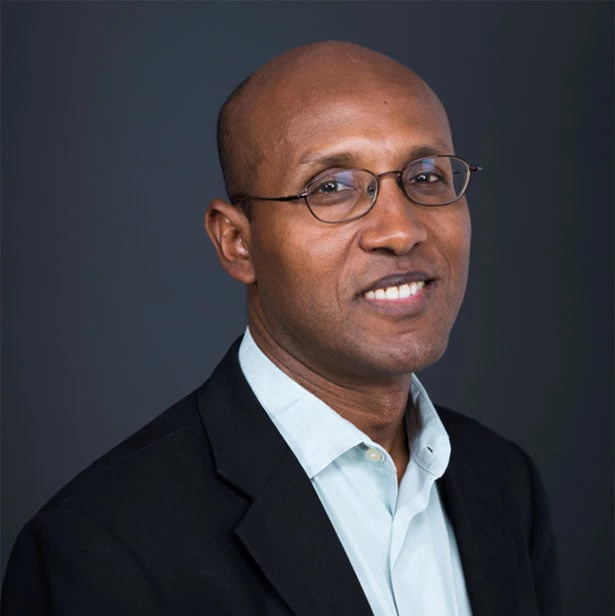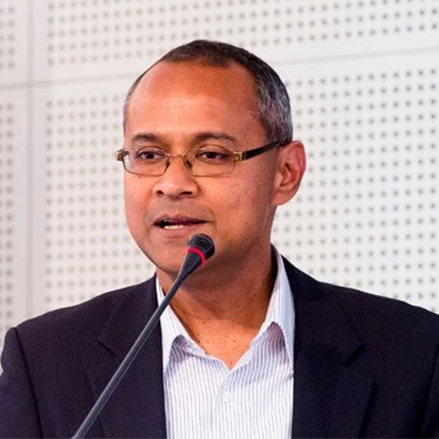Available in French
There’s a buzz about Sub Saharan Africa (SSA) these days. [i] Growth has recovered and has seen one of its longest runs of any period in the continent’s recent economic history. Young democracies are consolidating. And despite a rise in asymmetric conflict through organized terror networks, large scale warfare is on the decline. So it seems appropriate to wonder whether these signs mean a better future for Africa’s children.
That is the subject of our recent report, which is about opportunities for children in 20 countries that are home to 70 percent of the population of sub-Saharan Africa, in the 2000s (roughly, over the period 1998-2008).
By opportunities, we mean basic minimum goods and services that boost future human capital, directly (through education, immunization and nutrition) and indirectly (through complementary infrastructure such as safe water, adequate sanitation, electricity and so on). The main indicator we use to gauge progress is the Human Opportunity Index (or HOI), which measures how close a society is to universal coverage for each opportunity for each distinctly defined group, say by income, race, ethnicity, or by “circumstance” (for details see Barros and others, 2008). We chose HOI because it has become one of the most common ways to operationalize the powerful idea that a person’s future should not be determined by their "circumstances" at birth, such as gender, location, parental and social background. Instead it should be defined by his or her effort and innate ability.
Why do we focus on children? First, even though unequal opportunities due to circumstances at birth can affect individuals at every stage of life, and while equalizing access to basic services for children will not end all inequities, the focus on children directs attention on something everyone can agree on: Providing equal opportunities early in life is desirable. Second, a focus on children is important because we have learned that interventions in childhood have high returns that accumulate over a lifetime and early deprivations can have lifelong effects. [ii]
Large gaps in access are common between children with “better” circumstances and those less fortunate, as seen from the profiles of two (hypothetical) children aged 6-11, living in the same country, for each of the 20 countries. A girl in a rural household from the poorest quintile that is headed by a woman with no education is 40 to 85 percentage points less likely to access a basic bundle of services (schooling, safe water and sanitation) than a boy in an urban household from the richest quintile that is headed by a man with more than 10 years of education. Other circumstances can matter as well. For example, a child’s gender contributes to high inequality of opportunity in education in Liberia and Niger; and being one of the elder children and having fewer siblings improves the likelihood of being immunized and better nourished in some countries.
In spite of this, SSA is making measurable progress in providing children with opportunities. In most countries, whether the progress is measured against single opportunities (say attendance, full immunization, etc.), or bundles of opportunities (which refers to a child having access to all opportunities we have considered) relevant for children of different age groups, there is grounds for cautious optimism.
The gaps between better-performing and lagging SSA countries have narrowed within a decade (that is, late-1990s and late-2000s). Gaps are also getting smaller between Francophone and Anglophone countries and cross-country variation in HOI for every opportunity has fallen. This progress has also led most SSA countries to close gaps with Latin America and Caribbean or “LAC” countries in school attendance, although not so in completing and starting primary school on time, which matter for the quality of learning (Figure 1).

Policy action has made a difference, even in resource-constrained environments, in bringing services to citizens and compensating for the inherent disadvantages faced by groups whose circumstances are not favorable. The report shows that most of the improvements are due to “scaling up” – increase in coverage proportionately among all groups – but the most rapid progress in HOI has usually occurred where improvements have also targeted and favored the disadvantaged groups.
Of course, much still needs to be done. Progress remains too slow for several essential services such as improved water sources, sanitation and electricity, where even the best SSA countries lag behind the lowest performers in LAC. Tackling these, as well as improving “second-generation” opportunities - such as quality of education - will require as concerted an effort as has been made to improve the coverage of primary education. Nonetheless, improving opportunities among children appears to be possible even in the poorest countries, and in some cases even when economic growth has been less than rapid.
The World Bank Group’s goal of promoting shared prosperity is about improving living standards for poorer members of society. It rests on unbounded aspiration that demands economic progress and social mobility over generations. Raising the living standards of the bottom 40 percent requires growing the economic pie and investing in improving the capabilities of citizens from an early stage of the life-cycle – what James Heckman, the 2000 Nobel Prize winner in Economics, calls “pre-distribution”. Equalizing opportunities for children, starting with inputs, goods and services that are critical in early childhood, is an important principle for pre-distribution. In SSA, such consensus in a social contract will be crucial in generating prosperity that does not leave the poor and the disadvantaged behind, and instead taps into their potential to accumulate the human assets that are critical for sustained improvements in living standards.
___________________________________________
There’s a buzz about Sub Saharan Africa (SSA) these days. [i] Growth has recovered and has seen one of its longest runs of any period in the continent’s recent economic history. Young democracies are consolidating. And despite a rise in asymmetric conflict through organized terror networks, large scale warfare is on the decline. So it seems appropriate to wonder whether these signs mean a better future for Africa’s children.
That is the subject of our recent report, which is about opportunities for children in 20 countries that are home to 70 percent of the population of sub-Saharan Africa, in the 2000s (roughly, over the period 1998-2008).
By opportunities, we mean basic minimum goods and services that boost future human capital, directly (through education, immunization and nutrition) and indirectly (through complementary infrastructure such as safe water, adequate sanitation, electricity and so on). The main indicator we use to gauge progress is the Human Opportunity Index (or HOI), which measures how close a society is to universal coverage for each opportunity for each distinctly defined group, say by income, race, ethnicity, or by “circumstance” (for details see Barros and others, 2008). We chose HOI because it has become one of the most common ways to operationalize the powerful idea that a person’s future should not be determined by their "circumstances" at birth, such as gender, location, parental and social background. Instead it should be defined by his or her effort and innate ability.
Why do we focus on children? First, even though unequal opportunities due to circumstances at birth can affect individuals at every stage of life, and while equalizing access to basic services for children will not end all inequities, the focus on children directs attention on something everyone can agree on: Providing equal opportunities early in life is desirable. Second, a focus on children is important because we have learned that interventions in childhood have high returns that accumulate over a lifetime and early deprivations can have lifelong effects. [ii]
Large gaps in access are common between children with “better” circumstances and those less fortunate, as seen from the profiles of two (hypothetical) children aged 6-11, living in the same country, for each of the 20 countries. A girl in a rural household from the poorest quintile that is headed by a woman with no education is 40 to 85 percentage points less likely to access a basic bundle of services (schooling, safe water and sanitation) than a boy in an urban household from the richest quintile that is headed by a man with more than 10 years of education. Other circumstances can matter as well. For example, a child’s gender contributes to high inequality of opportunity in education in Liberia and Niger; and being one of the elder children and having fewer siblings improves the likelihood of being immunized and better nourished in some countries.
Sub-Saharan Africa: Opportunity Calculator
In spite of this, SSA is making measurable progress in providing children with opportunities. In most countries, whether the progress is measured against single opportunities (say attendance, full immunization, etc.), or bundles of opportunities (which refers to a child having access to all opportunities we have considered) relevant for children of different age groups, there is grounds for cautious optimism.
The gaps between better-performing and lagging SSA countries have narrowed within a decade (that is, late-1990s and late-2000s). Gaps are also getting smaller between Francophone and Anglophone countries and cross-country variation in HOI for every opportunity has fallen. This progress has also led most SSA countries to close gaps with Latin America and Caribbean or “LAC” countries in school attendance, although not so in completing and starting primary school on time, which matter for the quality of learning (Figure 1).

Policy action has made a difference, even in resource-constrained environments, in bringing services to citizens and compensating for the inherent disadvantages faced by groups whose circumstances are not favorable. The report shows that most of the improvements are due to “scaling up” – increase in coverage proportionately among all groups – but the most rapid progress in HOI has usually occurred where improvements have also targeted and favored the disadvantaged groups.
Of course, much still needs to be done. Progress remains too slow for several essential services such as improved water sources, sanitation and electricity, where even the best SSA countries lag behind the lowest performers in LAC. Tackling these, as well as improving “second-generation” opportunities - such as quality of education - will require as concerted an effort as has been made to improve the coverage of primary education. Nonetheless, improving opportunities among children appears to be possible even in the poorest countries, and in some cases even when economic growth has been less than rapid.
The World Bank Group’s goal of promoting shared prosperity is about improving living standards for poorer members of society. It rests on unbounded aspiration that demands economic progress and social mobility over generations. Raising the living standards of the bottom 40 percent requires growing the economic pie and investing in improving the capabilities of citizens from an early stage of the life-cycle – what James Heckman, the 2000 Nobel Prize winner in Economics, calls “pre-distribution”. Equalizing opportunities for children, starting with inputs, goods and services that are critical in early childhood, is an important principle for pre-distribution. In SSA, such consensus in a social contract will be crucial in generating prosperity that does not leave the poor and the disadvantaged behind, and instead taps into their potential to accumulate the human assets that are critical for sustained improvements in living standards.
___________________________________________
[i] Some prominent publications include, The Economist’s “The Hopeful Continent”; The Time Magazine’s “Africa Rising” and the McKinsey Global Institute’s “Lions on the Move.”
[ii]For example, early childhood interventions have long-term impacts on adult earnings to retirement savings (Chetty et al., 2010); and access to safe water significantly reduces the risk of chronic illness and undernourishment in children, which in turn affects their education and lifelong earnings (Cabral et al. 2009 and Jalan and Ravallion 2003)



Join the Conversation